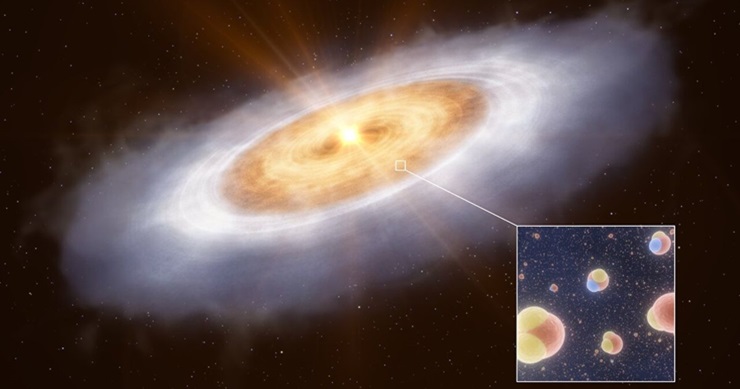Astronomers have discovered a disk of planet-forming material around a distant star, V883 Orionis, which contains hundreds of times more water than all of Earth’s oceans.
The discovery could provide insights into how water travels from star-forming gas and dust clouds to planets, and may also suggest that Earth’s water is older than the sun. The team of astronomers used the Atacama Large Millimeter/submillimeter Array (ALMA) in Northern Chile to observe V883 Orionis, a young star located around 1,300 light-years from Earth.
They studied a heavier version of water in the disk of gas and dust around the star, which will eventually collapse to create planets, comets, and asteroids. This research could help trace the path of water from massive gas and dust clouds that form stars, to the planetary disks that grow around these stars and eventually birth planets, asteroids, and comets.
Key Takeaways:
- Astronomers have discovered a large quantity of water in gas form in a disk of planet-forming material around a distant star, providing insights into how water moves from star-forming clouds to planets.
- The findings suggest that Earth’s water may be older than the sun, tracing its origins back to before the formation of the solar system.
- The composition of the water in the disk is similar to that of comets in our own solar system, reinforcing the idea that water in planetary systems may have formed billions of years ago in interstellar space and has been passed down to comets and Earth relatively unchanged.
“Astronomers have detected an abundance of water in the form of gas in a disk of planet-forming material that surrounds a distant star. The disk appears to contain hundreds of times more water than in all of Earth’s oceans. The discovery could give clues as to how water moves from star-forming clouds of gas and dust to planets, and could also indicate that Earth’s water may be older than the sun.”
More details: here


Leave a Reply